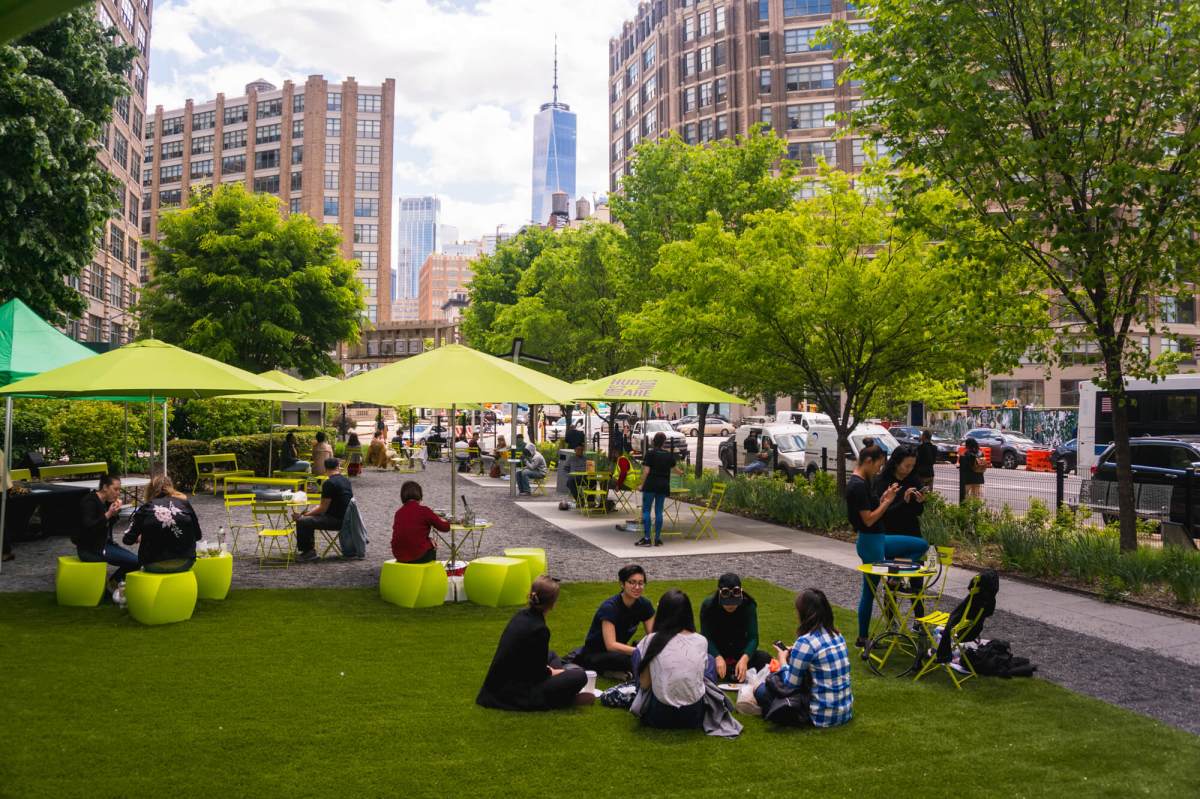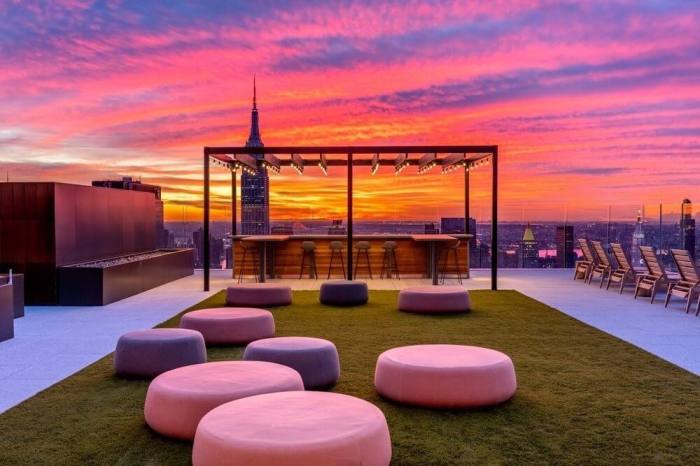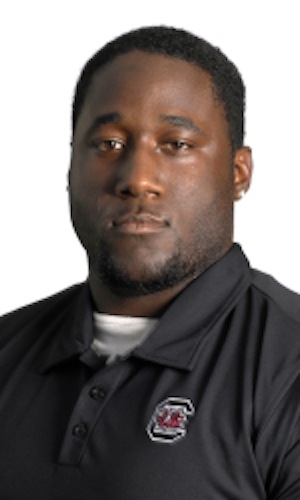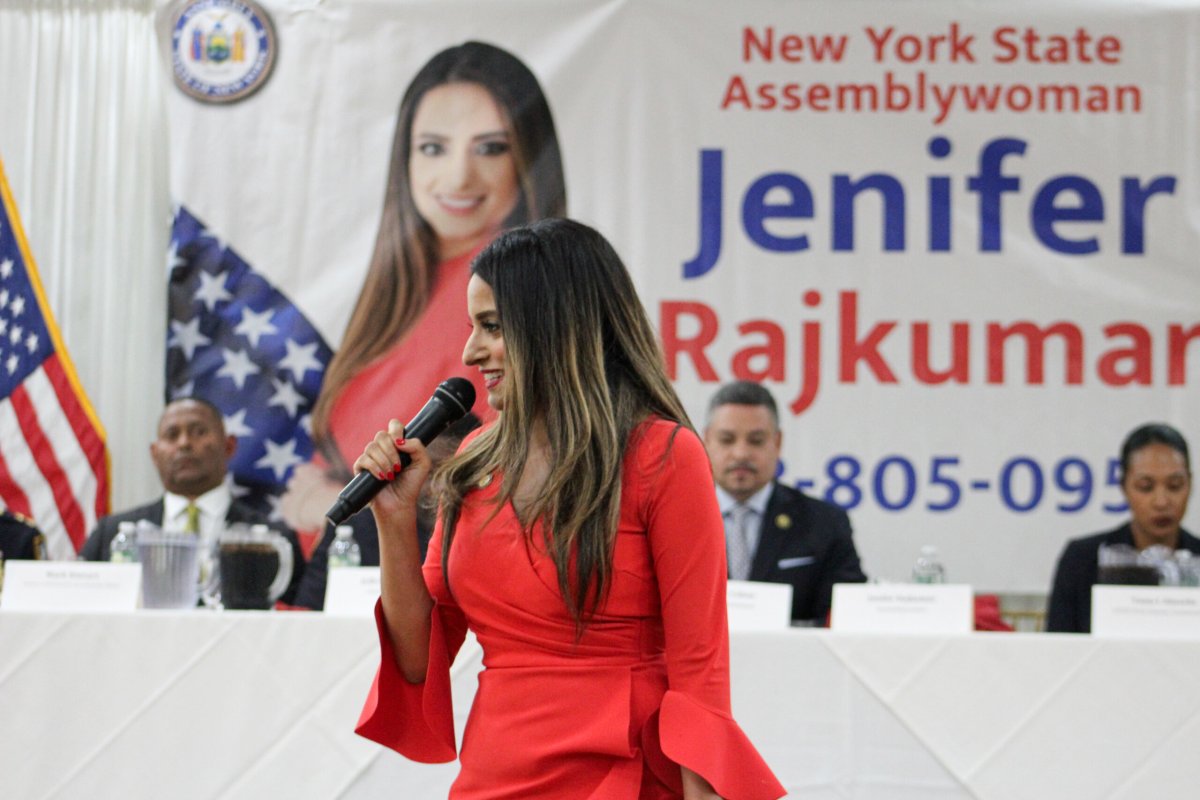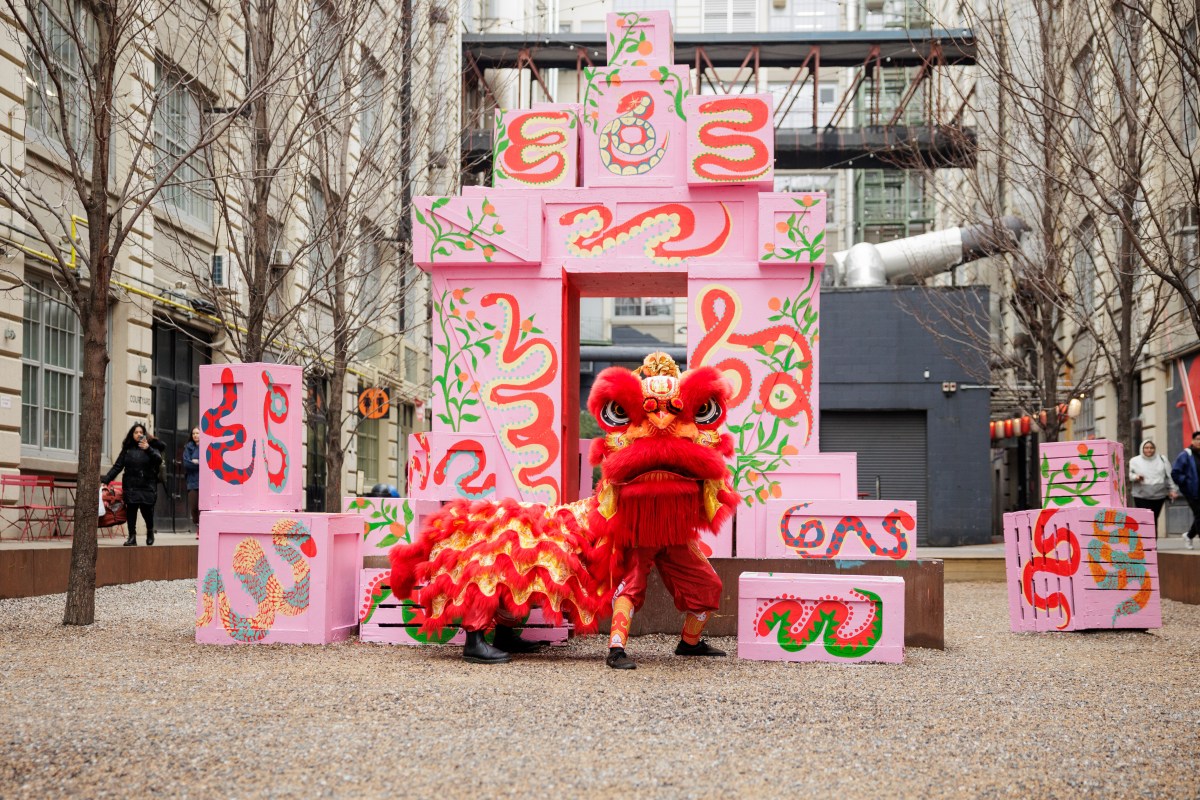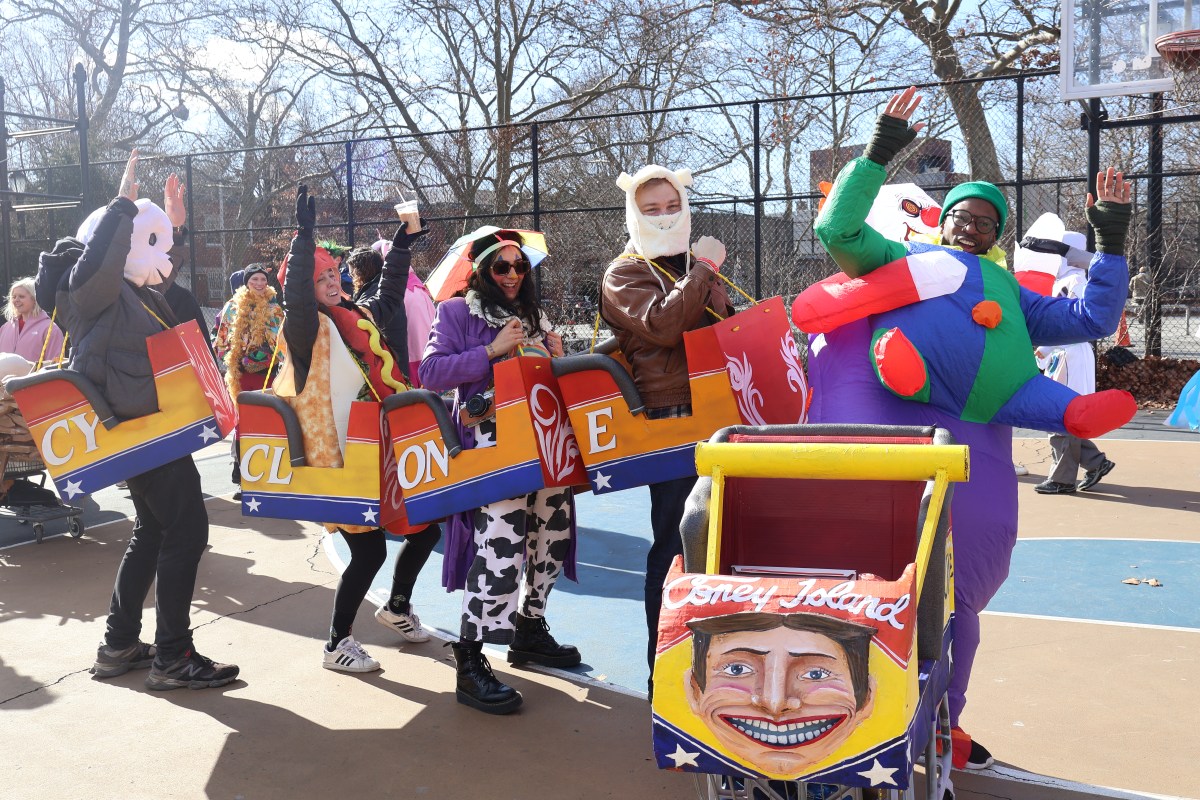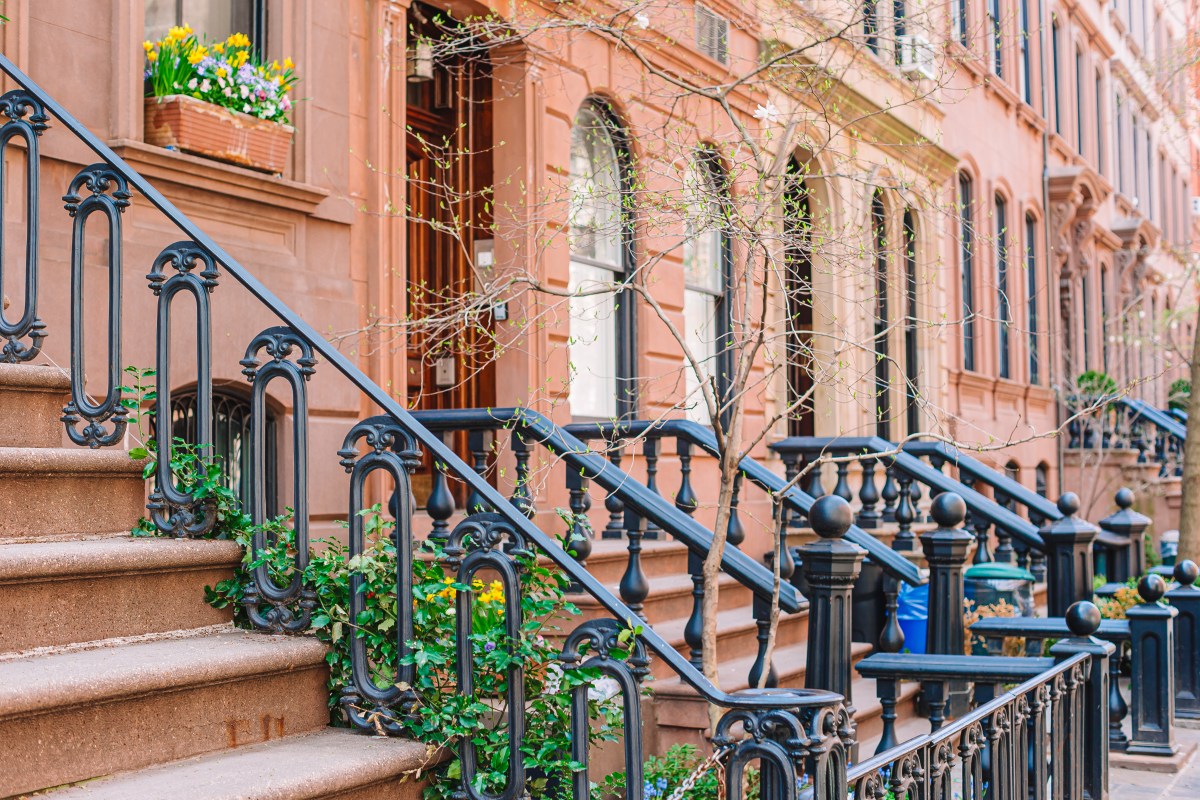Just 15 years ago, Hudson Square was a concrete jungle, notorious for the cars lining up at the entrance to the Holland Tunnel. At the time, a small sliver of brick and concrete at Spring Street and Little 6th Avenue, dotted with a few trees, represented the sole open space in the district. But the Hudson Square Business Improvement District had a vision to change that. They saw the potential for two underutilized parking lots at the mouth of the Holland Tunnel, owned by the Port Authority of New York and New Jersey, to be transformed into public parks.
Critics thought the idea was absurd. Who would want to sit at the entrance of a tunnel, surrounded by vehicular traffic? Turns out that done right, thousands of people will do just that.
This May, the BID celebrated the 10th anniversary of that transformed space. Along with Freeman Plazas West and East, these award-winning green spaces took the underutilized lots and turned them into public spaces featuring plants, art installations, games, and seating. They are a buffer to the tunnel traffic and provide an unexpected oasis from the noise and congestion all around. Yet, in the 10 years since these plazas opened, the neighborhood still falls well below the city’s goal of 2.5 acres of public space per 1,000 residents. More open space is possible — but only if we agree to prioritize space for open air and greenery. A City-owned vacant site at Hudson and West Houston Streets presents us with one such opportunity.
Creative development of the public realm gives workers, residents, and visitors access to unique public spaces. As our city evolves, underutilized or outmoded spaces, like industrial areas and parking lots, should be repurposed to serve the changing city. Public spaces don’t have to be covered in grass to be enriching if they’re designed with people in mind. New York City has been a pioneer in adaptive reuse — we transformed Chelsea’s unused elevated rail lines into the High Line, now one of the premier destinations in the city, and developed Hudson Yards as a new neighborhood with parks over rail lines on Manhattan’s far West Side. These industrial corridors show the potential in creatively adapting unused spaces for a city’s current needs.
The COVID-19 pandemic only highlighted just how critical this adaptation is to the future and health of our neighborhoods. And New York City is starting to reprioritize accordingly. In the New New York report released in 2022, the city pledged to reimagine our neighborhoods as mixed-use, 24-7 communities. A key component of that is providing streets, sidewalks, plazas, and parks that feel welcoming for people. In neighborhoods that don’t already have abundant green space, creating this space will mean repurposing streets and curbs from cars. And the results are already in — we know these types of public places, like Open Streets, encourage people to spend more time in neighborhoods and shop local businesses. People-centered street spaces make New Yorkers feel more connected to local life. Creating these spaces cannot be just a nice afterthought — they are an essential piece of a thriving city and we need to prioritize their creation alongside housing, local business, transit, and more.
This latest opportunity at Hudson and West Houston Streets typifies this mindset. The City plans to build much-needed affordable housing on the northern portion of this site. However, the southern parcel is slated to be open space through a partnership between NYC Parks and NYC DEP because the infrastructure underneath it prevents development on top. This creates a perfect opportunity for increasing the neighborhood’s scant open space.
By bringing in both affordable housing and new public space, everyone wins. With the support of the City and Manhattan Borough President Mark Levine, Parks is now ready to move ahead with design and subsequently construction. Parks will work with the community to develop the design and partner with the Hudson Square BID on this project as they did on Spring Street Park. When it’s complete, the BID’s involvement will ensure continual and consistent local stewardship of this public space to keep it green, clean, and welcoming for all users.
And not only neighborhood residents will benefit. People who work in the area will gain sorely needed seats for eating lunch; the adjacent school will have a new space for outdoor activities; local shoppers will gain somewhere to rest their weary feet. The Freeman Plazas showed our neighborhood that nontraditional park space can be as joyful and enriching as any other. We have an opportunity now to continue to repurpose old space for new use, as part of cohesive and collaborative ongoing neighborhood development.
The Hudson Square BID is ready to help — and this project should be a blueprint for many new public spaces across the five boroughs.
Samara Karasyk is the president and CEO of the Hudson Square BID. Sara Lind is co-executive director of Open Plans.



